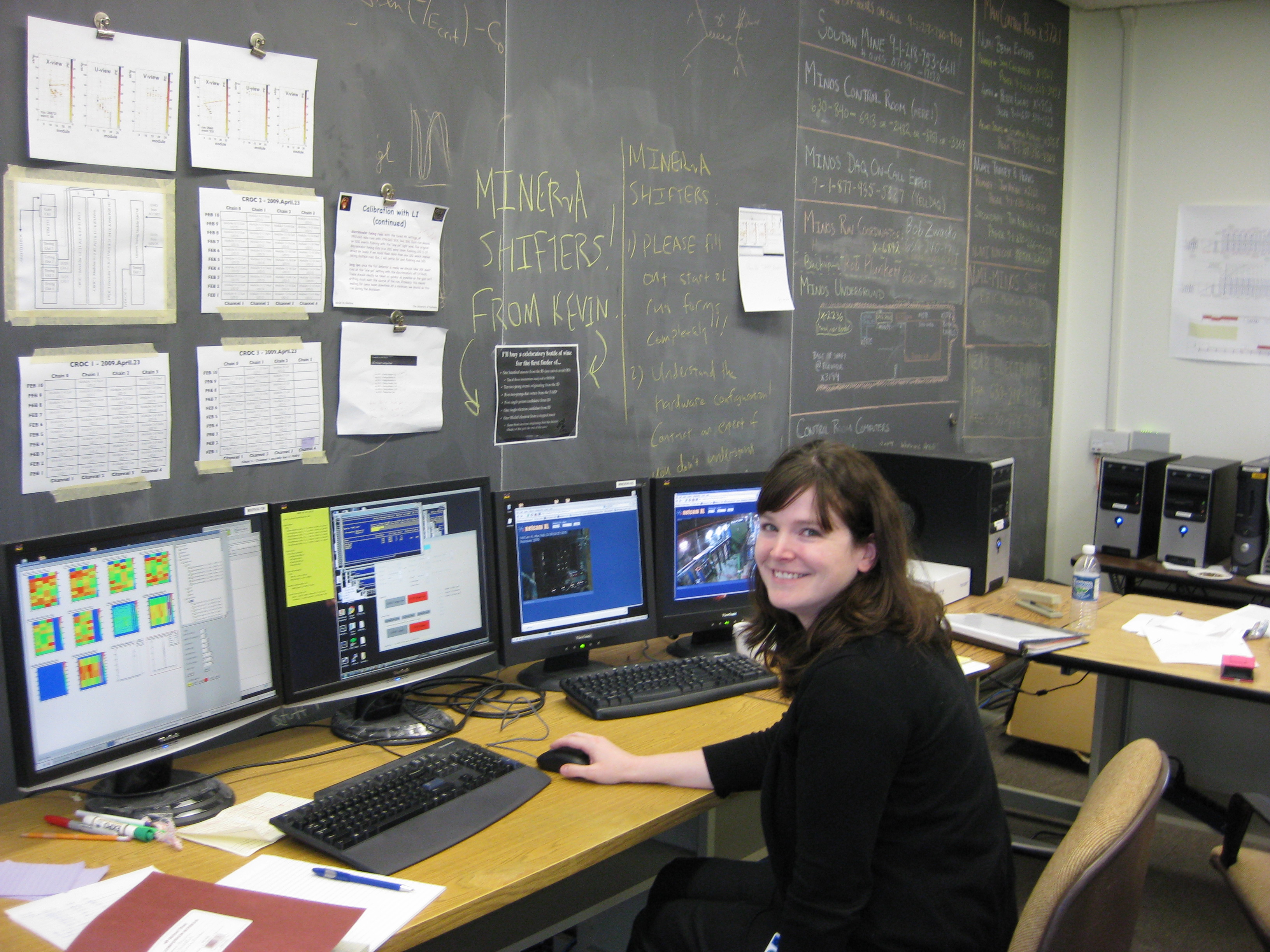MCLA Physics Professor Dr. Emily Maher Announces Ground-Breaking Result in Nature Publication
Roughly a trillion neutrinos pass through the human body every second. Luckily, neutrinos rarely interact, so these ghost particles go unnoticed. However, neutrinos' reluctance to interact is unlucky for the scientists attempting to understand and detect them.
To study neutrinos, physicists must build massive underground detectors, create trillions of neutrinos, carefully send them to the detector, and wait until enough neutrinos interact to study their characteristics. MCLA Physics Professor Dr. Emily Maher was recently published in Nature for her efforts in the MINERvA collaboration at Fermi National Accelerator Lab (Fermilab) outside of Chicago.
Over a 10-year span, the MINERvA detector recorded the interactions of neutrinos and antineutrinos, the antimatter partners of the neutrino. The physicists working on the MINERvA experiment used the data to make a ground-breaking new measurement which was released in Nature titled “Measurement of the axial vector form factor from antineutrino–proton scattering.”

“Neutrinos are the most abundant and least understood particle in our universe,” Dr. Maher said. “In addition to studying the neutrinos themselves, we can use neutrinos to study other systems. Astronomy uses neutrinos to study distant cosmic structures. At the other extreme, MINERvA used neutrinos to probe the interior of the atomic nucleus. One of our collaborators, Teijin Cai from York University, developed an extremely clever method to study the simplest nucleus – the proton. This was not something we intended to study, but this is the great thing about science – you never know what you will find!”
The nucleus of an atom is extremely small and difficult to study. Physicists cannot not look inside the nucleus with microscopes, so they must be creative in their attempts to understand it. By shooting neutrinos inside the nucleus and studying what comes out, they can learn about the size, shape, and inner workings of the nucleus.
“When neutrinos and antineutrinos interact inside a nucleus, they collide with protons and neutrons to make other particles,” Dr. Maher said. “Sometimes these particles fly out of the nucleus, and we can measure them. Sometimes these particles interact with other protons or neutrons inside of the nucleus before exiting, which can change them. Sometimes these particles are absorbed before they can leave the nucleus. Since we can only see the particles that leave the nucleus, it is difficult to say exactly what is happening inside. Theoretical models that predict the scattering of antineutrinos with protons exist, however, we made the first direct experimental measurement of proton-antineutrino scattering.”
This result facilitates precise measurements of neutrino characteristics in future experiments.
Dr. Maher has spent more than 20 years studying neutrinos. She began her work at Fermilab in 2000, studying the tau neutrino for her thesis work. This experiment – DONuT (Direct Observation of Nu Tau) – made the world’s first direct observation of the tau neutrino. Maher
said she enjoys studying neutrinos because “neutrinos continually surprise us and point us to new physics.”
Dr. Maher also worked on the MINOS experiment, which found that neutrinos can change types as they pass through space. The MINOS experiment sent a beam of neutrinos from Fermilab in Chicago through the Earth to a decommissioned iron mine in Northern Minnesota, where she helped build a 5.4 kiloton detector half a mile underground. She joined the MINERvA experiment shortly after starting at MCLA. She began her work on MINERvA by helping construct the detector. Once data-taking began in 2009, Dr. Maher oversaw the calibrations of the data, which involved standardizing the output of the 32,000 channels of the detector.

While working on MINERvA, Dr. Maher partnered with MCLA students Darsa Donelan ’09, Jason Mativi ’10, Max Eve ’13, and Mike Testa ’13; who were able to travel to Fermilab and contribute to the MINERvA research.
“The new MINERvA result is extremely exciting and will be helpful to future neutrino experiments, and I am happy I could contribute,” Maher said. “I also have to say that seeing my name and MCLA listed as an author in Nature, the world’s leading multidisciplinary science journal, is also quite exciting!”
